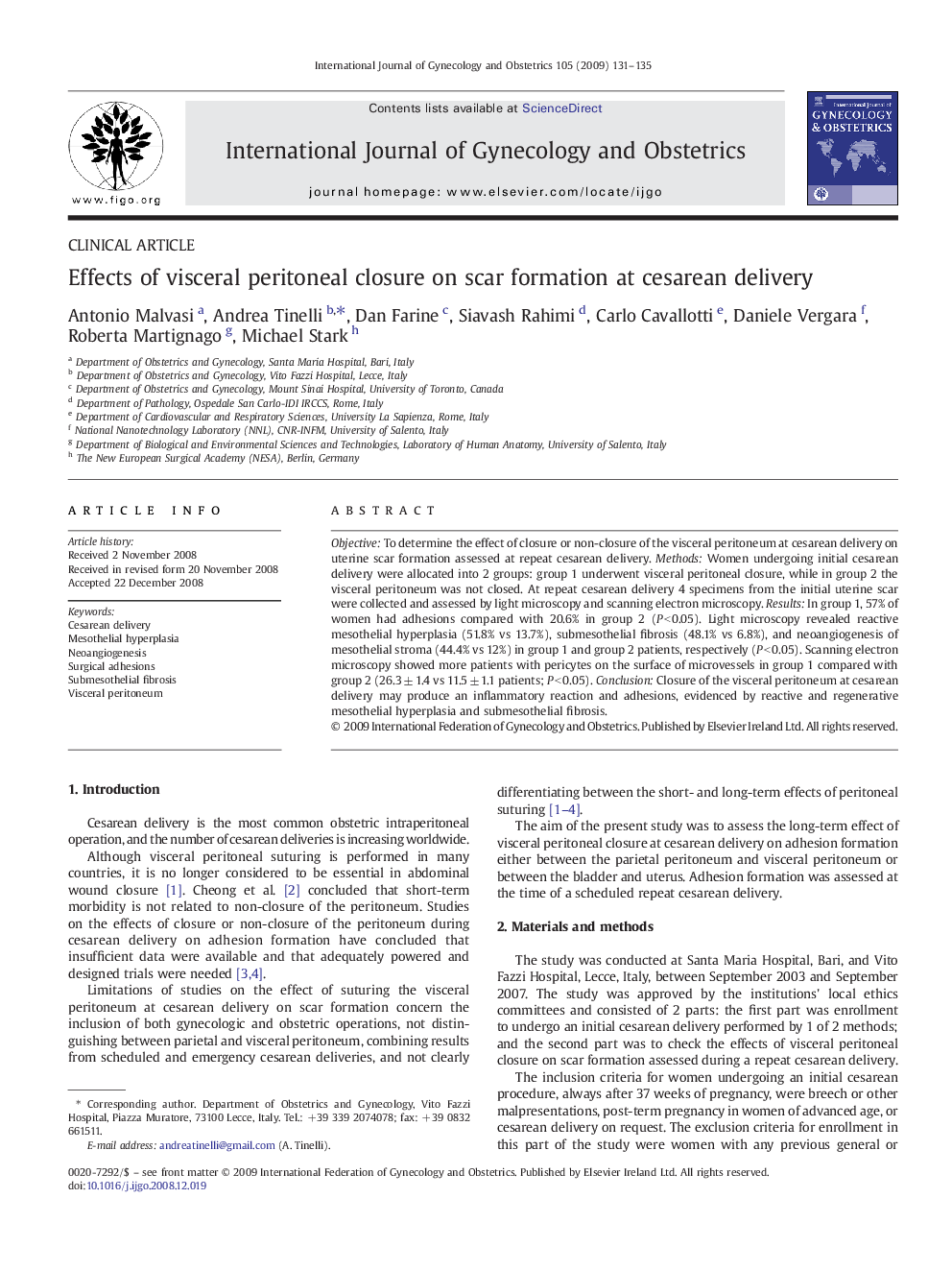| Article ID | Journal | Published Year | Pages | File Type |
|---|---|---|---|---|
| 3953840 | International Journal of Gynecology & Obstetrics | 2009 | 5 Pages |
ObjectiveTo determine the effect of closure or non-closure of the visceral peritoneum at cesarean delivery on uterine scar formation assessed at repeat cesarean delivery.MethodsWomen undergoing initial cesarean delivery were allocated into 2 groups: group 1 underwent visceral peritoneal closure, while in group 2 the visceral peritoneum was not closed. At repeat cesarean delivery 4 specimens from the initial uterine scar were collected and assessed by light microscopy and scanning electron microscopy.ResultsIn group 1, 57% of women had adhesions compared with 20.6% in group 2 (P < 0.05). Light microscopy revealed reactive mesothelial hyperplasia (51.8% vs 13.7%), submesothelial fibrosis (48.1% vs 6.8%), and neoangiogenesis of mesothelial stroma (44.4% vs 12%) in group 1 and group 2 patients, respectively (P < 0.05). Scanning electron microscopy showed more patients with pericytes on the surface of microvessels in group 1 compared with group 2 (26.3 ± 1.4 vs 11.5 ± 1.1 patients; P < 0.05).ConclusionClosure of the visceral peritoneum at cesarean delivery may produce an inflammatory reaction and adhesions, evidenced by reactive and regenerative mesothelial hyperplasia and submesothelial fibrosis.
